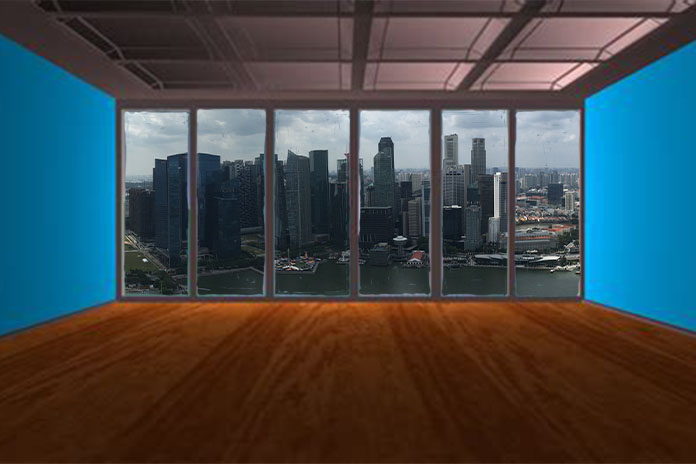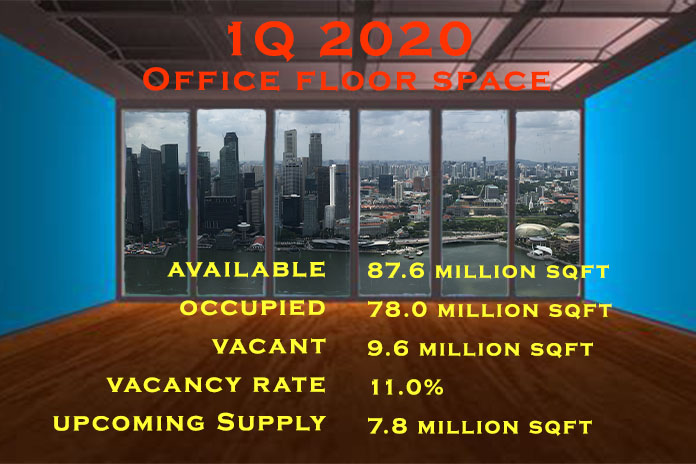
REMOTE working, flexible work arrangements and hot-desking have been discussed for over 2 decades, since the technological leaps of the dotcom boom era in the late 1990s. It was adopted, then stumbled, rehashed, sputtered. There was no coordinated will amongst Multi-National Corporations (MNCs) to adopt flexible work arrangements.
Until COVID-19 came along and tilted the field. Or did it right the field by adjusting our mindset?
Many real estate analysts and operators and landlords of commercial spaces have repeatedly highlighted that demand for office space will remain strong.
For example, due to distancing requirements and prior to having a vaccine, a company trying to accommodate the same number of workers will require possibly 20-50% more space.
Some employers are concerned that remote working does not help in building a shared company culture. Companies may have invested in expensive buildings or office renovations and would loath to see these investments wasted if a large percentage of their workers do not work from the office.
ALSO READ: The Food Industry Struggles For Leverage
Then again, workers may not warm to the idea of being cooped up in their apartments, and if they have young children, they may not be productive at home.
For all these reasons, supporters of commercial real estate already conclude that there will be no decline in the take up of office space, and are already cheering for a post-COVID-19 recovery in real estate prices.
The Changes We Have Seen
However, an article by MarketWatch published on 15 May 2020 suggested that a large number of tech employees in the USA will not want to return to their offices after COVID-19 is over.
Recently, Twitter Inc. said its employees have the option of never coming back to the office to work, while Facebook Inc., Google parent Alphabet Inc., Salesforce.com Inc. and Slack Technologies Inc. have said they don’t expect workers back in the office until 2021.
The article also quoted tech giant Cisco CEO Chuck Robbins: “Some elements of this work-from-home scenario will not go away.”
ALSO READ: Let’s Learn From Everyone
The convenience and flexibility afforded by technology for video meetings such as Zoom, WebEx, Meet and Teams, or work collaboration tools such as Dropbox, Trello and Lark have been around for several years. COVID-19 forced us not only to incorporate these tools at work but to make regular use of them in the past few months.
This Work From Home (WFH) phenomenon swept around the world at the same time. Business people were forced to interact with suppliers and customers remotely. Now, four months into the COVID-19 pandemic, many lawyers, bankers and professionals have adapted to online business activities such as the signing of multi-million-dollar contracts, banking transactions, court hearings, funds management, corporate accounting, etc..
The result will be that many business professionals now realise they are more productive working remotely. They complete tasks faster and more efficiently without having to be physically in their offices and they save commuting time and expenses. The companies they work for could economise on future rental budgets.
We foresee that many employees will opt to work from home on a more permanent basis, or work anywhere else outside of their offices say, in a park, a library or a café.
This bottom-up demand from employees allows MNCs to study their office space needs for the next 5-10 years.
The Advantages Do Not End There
Companies able to increase the proportion of staff on flexible work arrangements may face less business disruptions and have better business continuity should another disease outbreak or natural disaster happen.
Sales people can multiply the number of sales calls they can make every week as travel is reduced, especially with overseas clients.
MNCs can hire top talent from abroad without the talent having to leave their hometown. For example, a Singapore pharmaceutical company may hire a researcher from Thailand on its Singapore payroll and adopt a remote work arrangement, avoiding applications for an Employment Pass in Singapore. The researcher will be paid a Singapore salary but does not require an expatriate’s housing and travel package.
Not all companies will have 100% of their staff work remotely. But given the global recession, 100% of companies will rethink their corporate real estate strategy, reducing employee time in the office through staggering work days or hours.
The impact of these changes will lead to a nett reduction of demand for space.
ALSO READ: Are We Closer To A Covid-19 Treatment?
Office Space in Singapore
The vacancy of office space hovered around 11% for the past 3 years.

In 1Q2020, just prior to the impact of COVID-19, some 9.6 million sqft of office space lay vacant across Singapore. This is equivalent to having more than 9 blocks of Vivocity of office space sitting vacant. The high volume of vacant space reflected anaemic business demand, increasing efficiency of space utilisation through co-working arrangements as well as a consistent supply of new office space.
An additional 7.8 million sqft of office space is planned for, or under construction.
Even prior to any significant impact of COVID-19, some 19,000 businesses and companies ceased operations in the first 3 months of 2020.
After COVID-19 hit Singapore, 8,663 companies ceased operations just in April.
As government support schemes expire in the second half of this year, we expect more businesses to close and more office workers to be laid off.
Of particular concern are tourism, transport and travel related businesses, most of which might never recover from this downturn. And pains in the oil and gas sector have just begun to show.
ALSO READ: Law Firms Prepare For The Post-Pandemic Era
COVID-19 will change workers’ and organisations’ behaviours, and it will reduce the demand for offices. Added to that are businesses failing or downsizing during this pandemic-led recession.
If we take a modest drop of 10% of the current office usage, that would result in occupied office space dropping from 78 million sqft to about 70 million sqft. Vacant space would then increase to almost 18 million sqft or 20%.
Perhaps real estate consultant CBRE’s forecast for Grade A office rents to drop by 13.0% in 2020 and then rebound 4.5% in 2021 is a tad optimistic.
While it is too early to make any definitive statements about the extent that COVID-19 will alter the economy, we can be sure that landlords will need to up their game and offer a lot more incentives to keep office space occupied.
Ku Swee Yong is the CEO of real estate consulting firm International Property Advisor Pte Ltd. For this article, his research was supported by Yeoh Theng and Aloysius Ng Shi Hao, future graduates from Singapore Management University.
If you have a point of view on COVID-19, or think someone you know could present a thought-provoking perspective on the subject, please email editor@storm-asia.com with your details and a short summary.



















